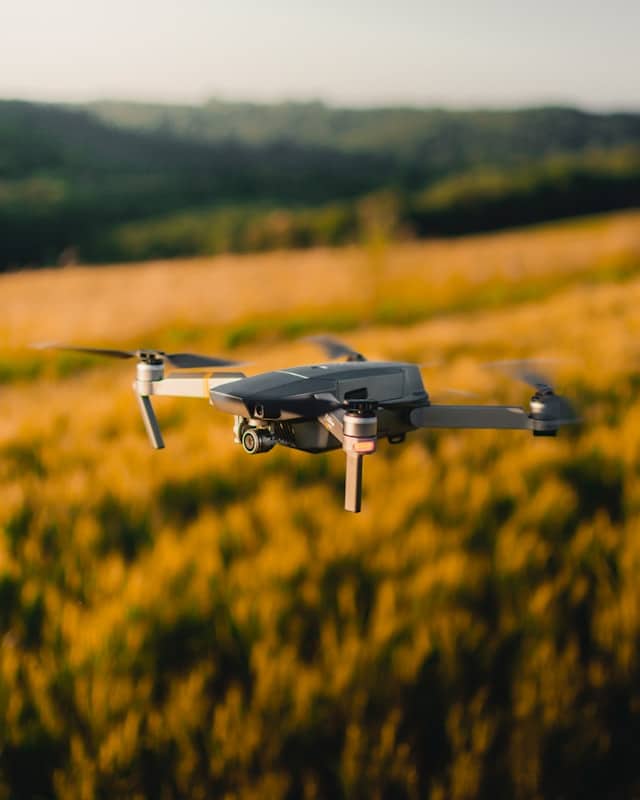How are AI-powered drones assisting in disaster response?

In our modern world where technology has become an indispensable part of our lives, one area where it is making significant strides is disaster response. Drones, combined with the power of Artificial Intelligence, are being increasingly used in disaster management. These flying wonders are not just quick, but they also facilitate data collection in real time, aiding in immediate response and recovery efforts. Let’s dive into the transformative role that these AI-powered drones play in disaster response.
The Rising Role of Drones in Disaster Management
You may picture drones as small, unmanned aircraft used for leisure activities or aerial photography. However, they have found a critical role in disaster management. When disasters strike, time is of the essence. The sooner the response teams can assess the damage, the quicker they can mobilize resources and begin recovery efforts.
Sujet a lire : Augmented reality for enhancing museum experiences
Drones, also known as Unmanned Aerial Vehicles (UAVs), are capable of reaching areas that are otherwise inaccessible due to the disaster. They can quickly cover large areas and provide high-resolution images, which assist in the assessment of the damage. In essence, drones contribute in saving time, one of the most critical factors in disaster management.
However, drones have evolved beyond just being aerial vehicles capturing images. They have become ‘smart’ with the integration of AI, and this has amplified their utility in disaster response.
A voir aussi : The impact of AI in predicting and preventing disease outbreaks
Integration of AI: Making Drones smarter
The incorporation of AI in the drones is a game-changer in disaster response. AI allows drones to process data they capture in real time. This means they can identify patterns, spot anomalies, and provide actionable insights almost instantaneously.
For instance, in case of a flood, an AI-powered drone can differentiate between water and land, identify the level of water, and even spot people stranded due to the flood. Similarly, in case of a fire, the drone can map the spread of fire, identify hot spots, and predict its likely path. This real-time data processing is crucial in managing disasters effectively and efficiently.
What’s more, AI enables drones to learn from each operation they undertake. This means, over time, they get better at identifying patterns, predicting outcomes, and immensely aiding in disaster response.
Drone-Based Search and Rescue Operations
Search and rescue operations are one of the most challenging aspects of disaster response. Often, the affected areas are vast, and the conditions are harsh. In such scenarios, drones prove to be of immense help.
Equipped with thermal and night vision cameras, AI-powered drones can locate missing persons or survivors in the most challenging conditions. They can navigate through debris or rubble in the aftermath of an earthquake, detect heat signatures in case of an avalanche, or scan large water bodies in case of floods.
Furthermore, these drones can also deliver emergency supplies, such as food, water, or medical aid, to affected areas before human rescuers can reach. This can be the difference between life and death for those stranded in disaster zones.
Drones in Data Collection and Damage Assessment
Another critical aspect of disaster response is data collection and damage assessment. Detailed and accurate data is paramount for effective deployment of resources and initiation of recovery efforts. This is where drones equipped with AI come in handy.
AI-powered drones can generate 3D models of the affected areas, providing a comprehensive view of the damage. They can identify critical infrastructures like bridges or power lines that are damaged and need immediate attention. With real-time processing, they can update rescue teams almost immediately, thereby reducing the response time significantly.
Moreover, the data collected by drones can be used for post-disaster recovery and building resilience for future disasters. It aids in understanding the patterns of disasters and developing strategies to mitigate the impact of such events in the future.
Drones in Developing Countries: A Step Towards Better Disaster Management
In developing countries where disaster management resources may be limited, drones can make a significant difference. They provide a cost-effective and efficient solution for disaster response.
In areas where infrastructure is poor, drones offer a way to quickly assess the situation without the need for extensive ground operations. They can be deployed rapidly, providing real-time data to aid in the response efforts. Furthermore, they can reach remote areas where human access may be difficult.
Overall, drones have become an indispensable tool in disaster management. Paired with AI, they are transforming the way we respond to disasters. From search and rescue operations to damage assessment and data collection, AI-powered drones are making disaster response more efficient and effective.
Enhancing Early Warning Systems with AI-Powered Drones
The capacity of drones to collect high-resolution images in real time has led to a major breakthrough in early warning systems for disaster management. Traditional early warning systems rely on ground-based sensors and satellite imagery, which may not always provide timely or accurate data. However, drones equipped with AI can make these systems more effective and efficient.
AI-powered drones can hover over potentially affected areas, collect data, analyze it in real time, and transmit the processed information to the disaster management teams. For instance, in the event of an impending flood, drones can analyze the level and speed of rising water and predict the areas likely to be flooded. Similarly, they can monitor the movement and spread of wildfires, providing an early warning to the communities at risk.
Furthermore, the integration of machine learning, a subset of AI, into drone technology has made it possible for drones to learn and improve their predictive capabilities. As they gather and analyze more data over time, their accuracy in predicting and identifying potential disasters improves, leading to more effective early warning systems. This enables better preparedness and proactive measures, thereby significantly contributing to disaster risk reduction.
Conclusion: The Future of Disaster Management with AI-Powered Drones
Technology has always played a crucial role in advancing our abilities to manage disasters, and the advent of AI-powered drones marks another significant milestone in this journey. From improving the efficiency and effectiveness of search and rescue operations to enhancing data collection for damage assessment, drones have indeed revolutionized disaster response.
Moreover, their role in strengthening early warning systems and risk reduction cannot be underestimated. With real-time data processing, decision making in disaster management has become more informed and timely, leading to quicker and more effective disaster relief.
However, as with any technology, there are challenges that need to be addressed. Concerns around privacy, safety, and regulatory aspects of drone usage cannot be ignored. Therefore, it is crucial for policymakers, technologists, and disaster management experts to work together to address these issues and maximize the potential of this technology in a responsible and ethical manner.
As we look to the future, it is clear that AI-powered drones will play an increasingly important role in disaster management. Whether it’s responding to natural disasters or mitigating their impact through early warning systems, these flying wonders are set to transform the way we approach disaster response and management.
